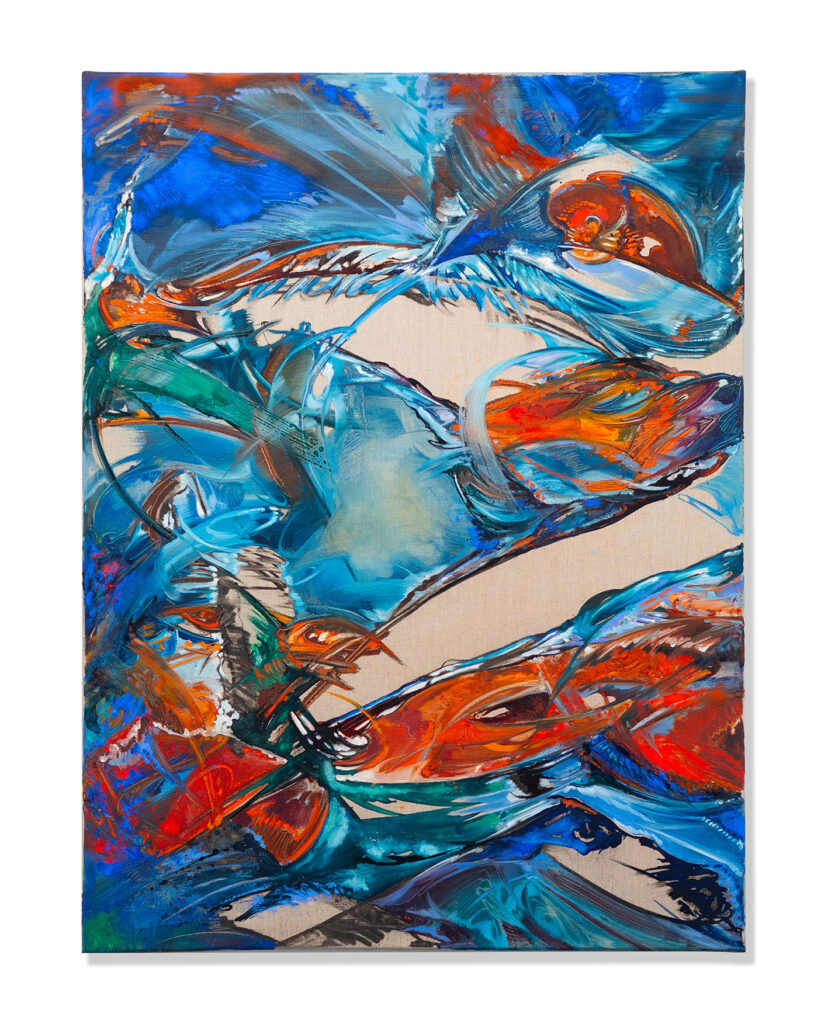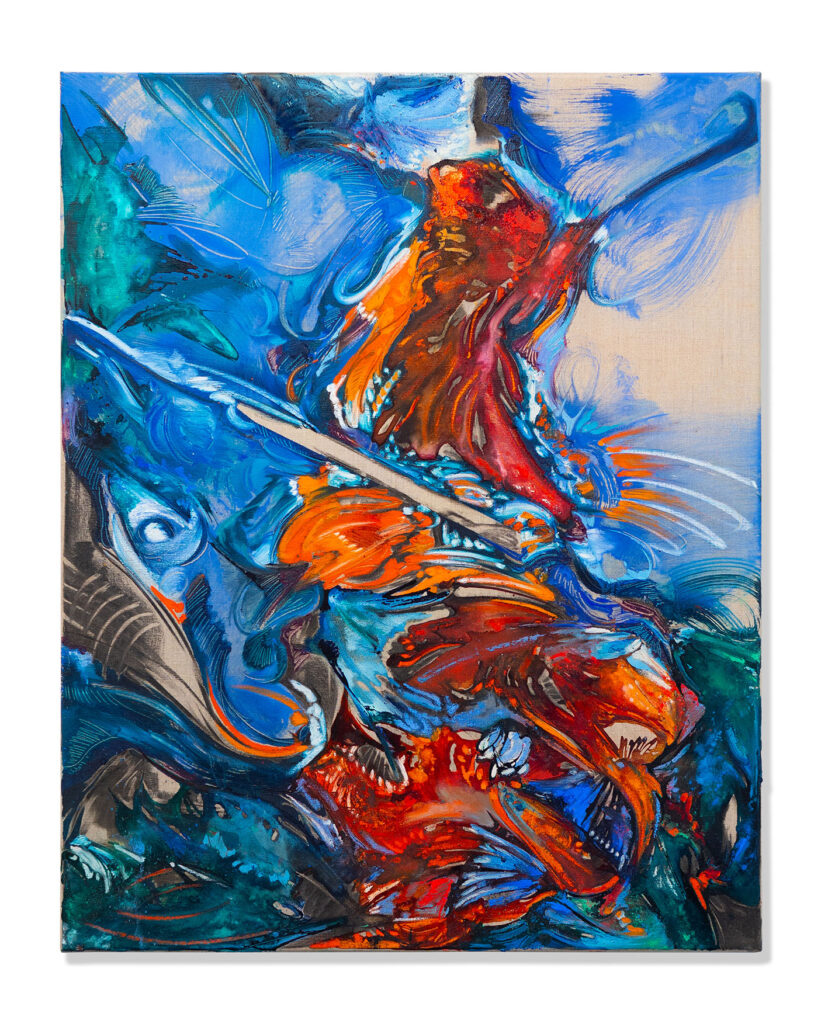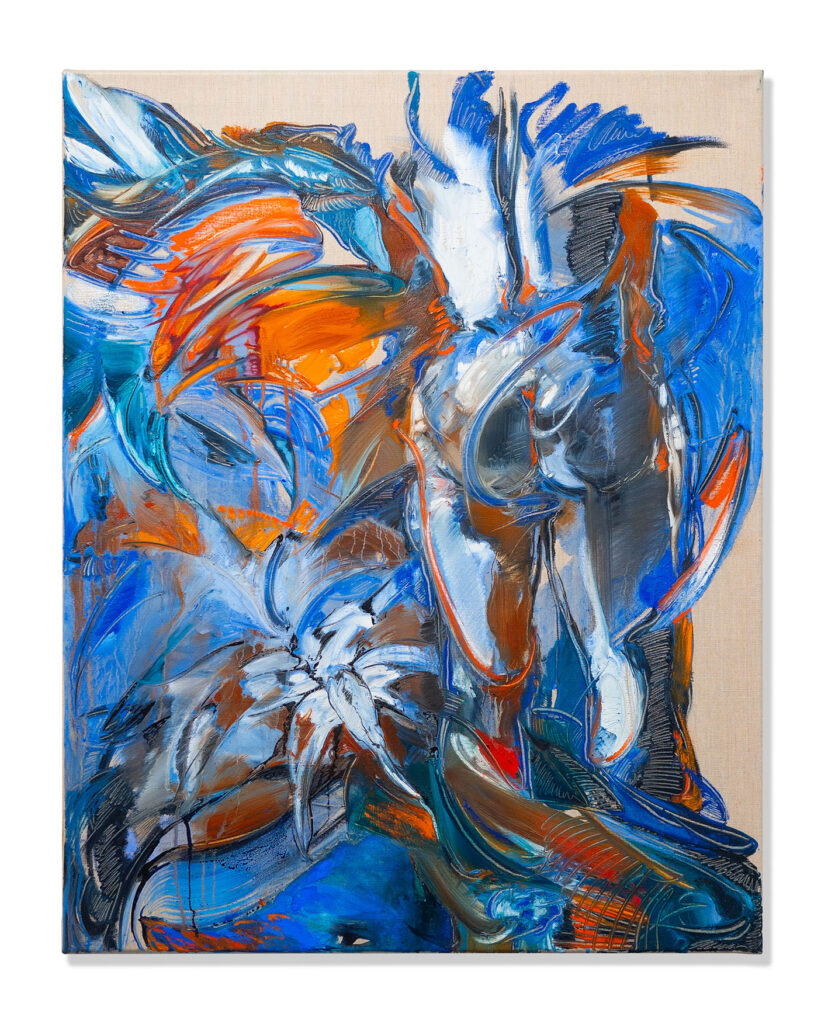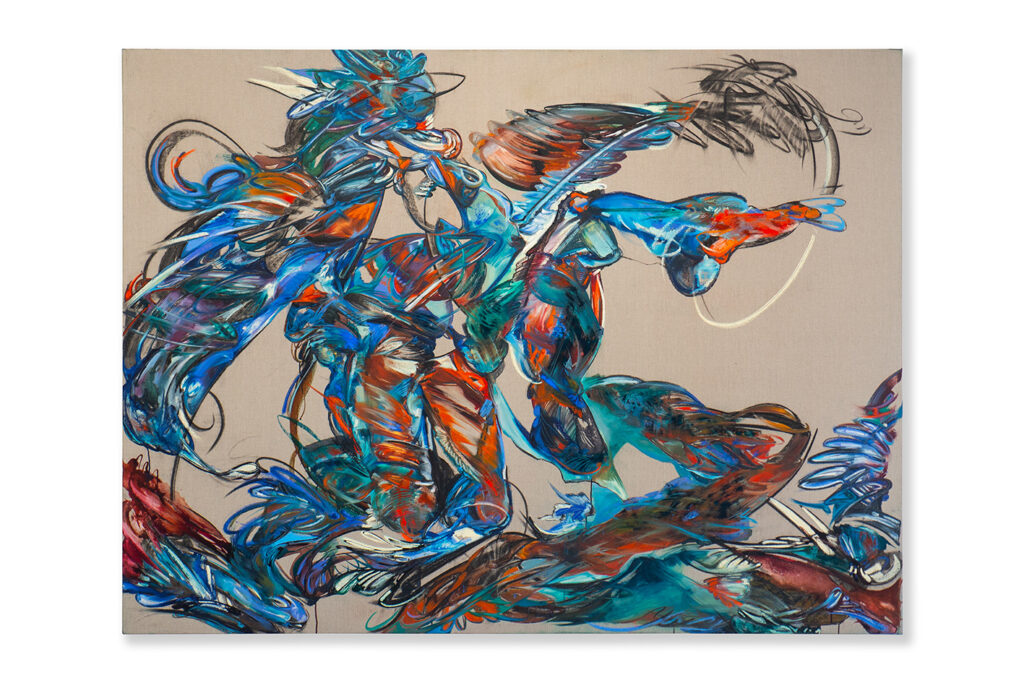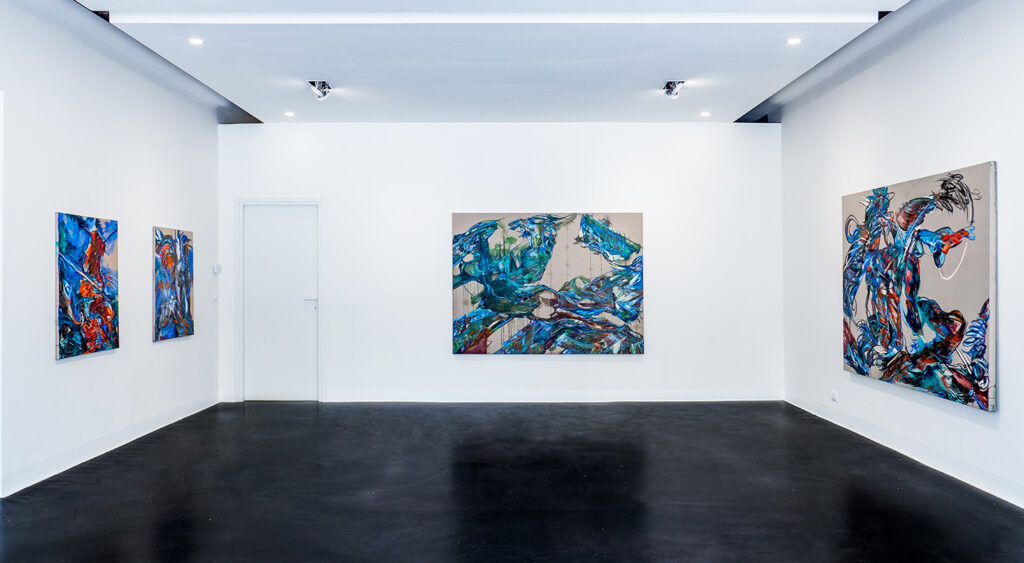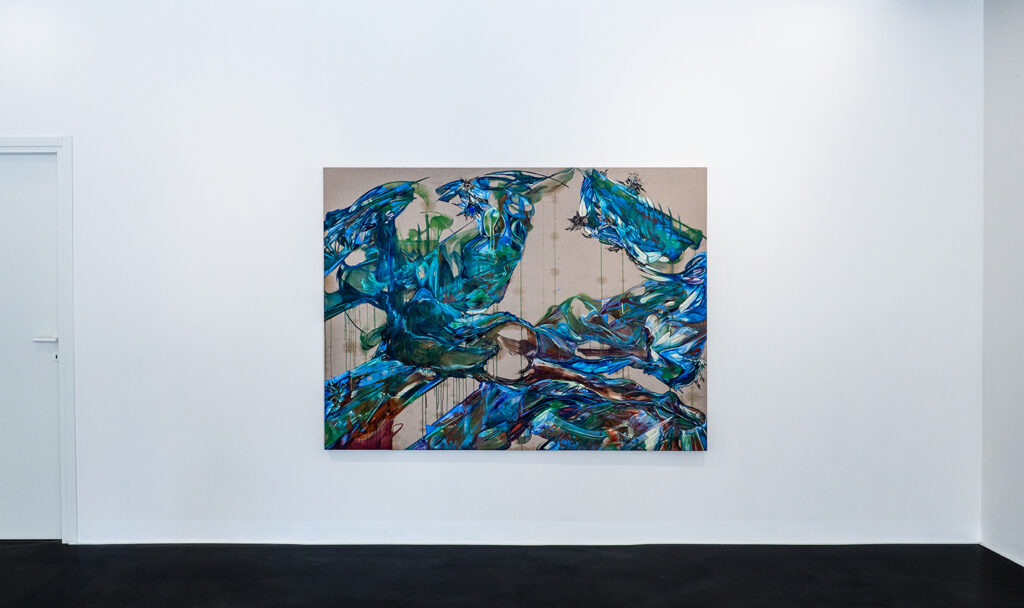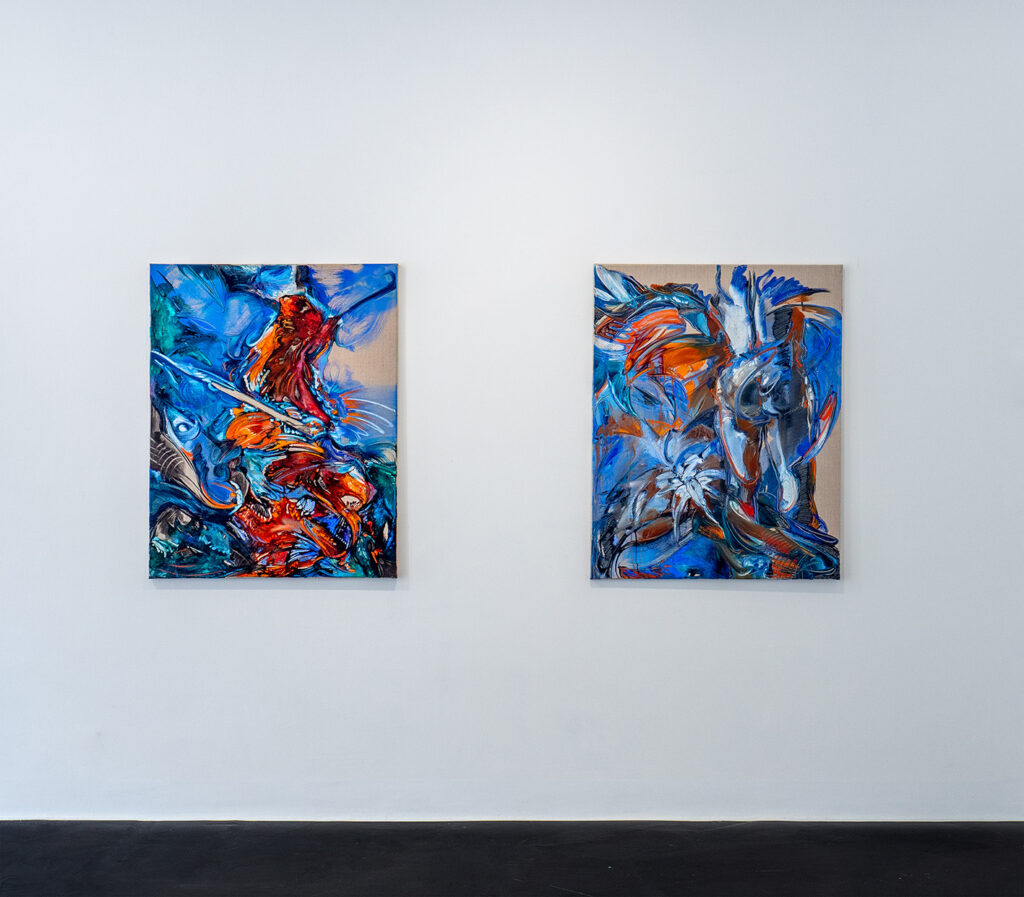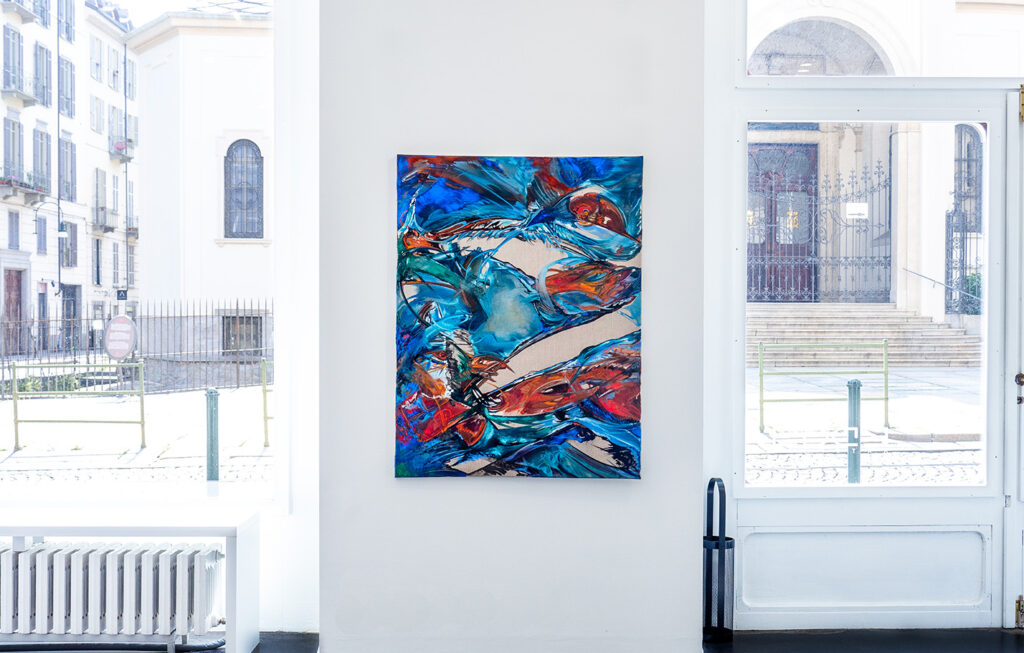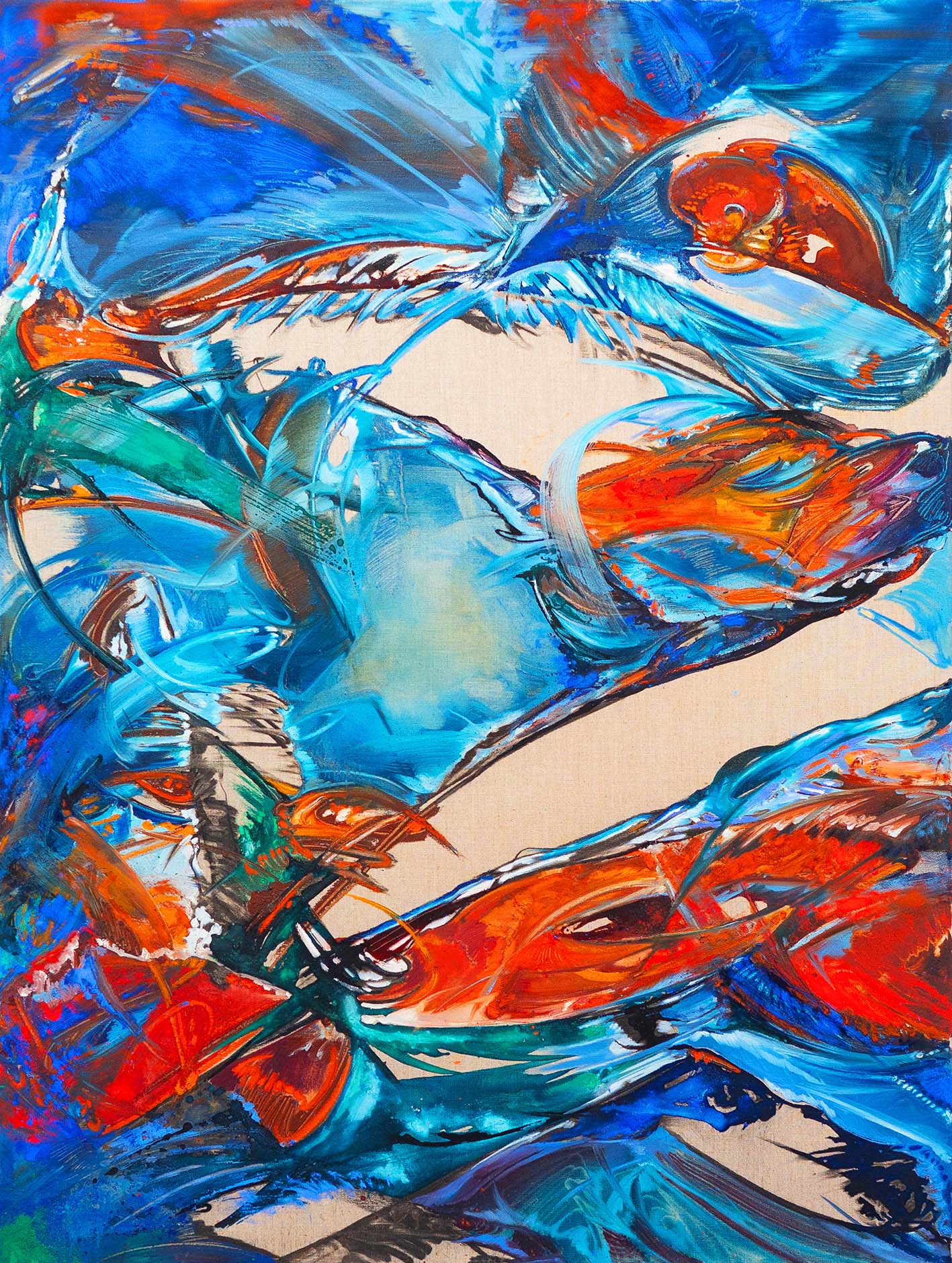
KATHERINE QIYU SU
SUMMER PHANTOMS OF DESIRE
JUNE 7th – JULY 27th 2024
Katherine Qiyu Su explores the realm of painting as a means of expression that enables her to investigate the theme of memory. Here, memory is viewed as a repository of events and emotional elements that are now lost in their physical form but that are replicable through a tireless rediscovery of the past.
Her fear of forgetting leads to her peculiar propensity for an indictive, factual recovery of her own life experience, which she captures primarily in the form of textual and photographic fragments. These fragments form the basis (or “skeleton”) of her artistic process, guiding and pointing to its evolution (its “skin”).
There are also fixed parts that come together in an authentic scaffolding of gestures. This is self-fulfilling in the first stage of the work, and appears in the form of a calligraphic charcoal drawing on linen. On the borderline between figurative and abstract art, the drawing portrays a stream of consciousness. This is followed by the use of oils, which create a liquid, ethereal essence, rich in connotation and yet elliptical in its narrative. Just like that of a creature subject to constant transformation.
Qiyu Su reflects on the cognitive mechanisms that enable us to reconstruct, or rather “translate”, the significance of our experience, even when its attributes are not entirely rational:
“I realized there are so-called memories that were never real experiences, maybe I imagined them and wish I did have them, or I witnessed them in my dreams. In between these made-up memories and real experiences, and dreams that are confused with realities, there’s a grey area full of surprises and inspirations which draws us coming back again and again.”
And here we find the pivotal issue around which the artist’s entire visual vocabulary revolves: the ethical quandary that we are duty-bound to deal with when we remember something. A degree of introspection with regard to what we might refer to as “intellectual honesty”; thus becomes both urgent and necessary.
“Writing down dreams is like recording intangible existence, then later they became a part of new memories. They circled looping themselves. Are we translating ourselves, are we misleading ourselves?”
And she continues:
“I don’t think of planning the outcome because I’m also learning it through the process, I can only know what effect I want to have once I achieved it. The way I apply paint creates these random marks that can’t be predicted. But all my works are figurative paintings, I put the figures in them then I abstract them. So, no matter how nonsense they looked like. I still trace the forms.”
In a sense, painting tends to mystify by pointing out (though at times obscuring) the memories that rise to the surface. Reminiscence and projection intertwine harmoniously, without conflicting, and occasionally they coexist in a dimension that allows for various types of inconsistency. In such a context, an analysis of the interaction between mechanical memory (motor habit) and pure (emotional) memory, as Henri Bergson put it, could be enhanced. Or, in Marcel Proust’s words, that of “voluntary and involuntary memory”.
In Qiyu Su’s artistic research, memories are defining elements of our identity on a profound level. Without them, we would be little more than “empty shells”;. The ultimate aim of her work thus lies in the rich terrain in which real and imaginary memory become as one, bringing together reality and fiction, past and future.
